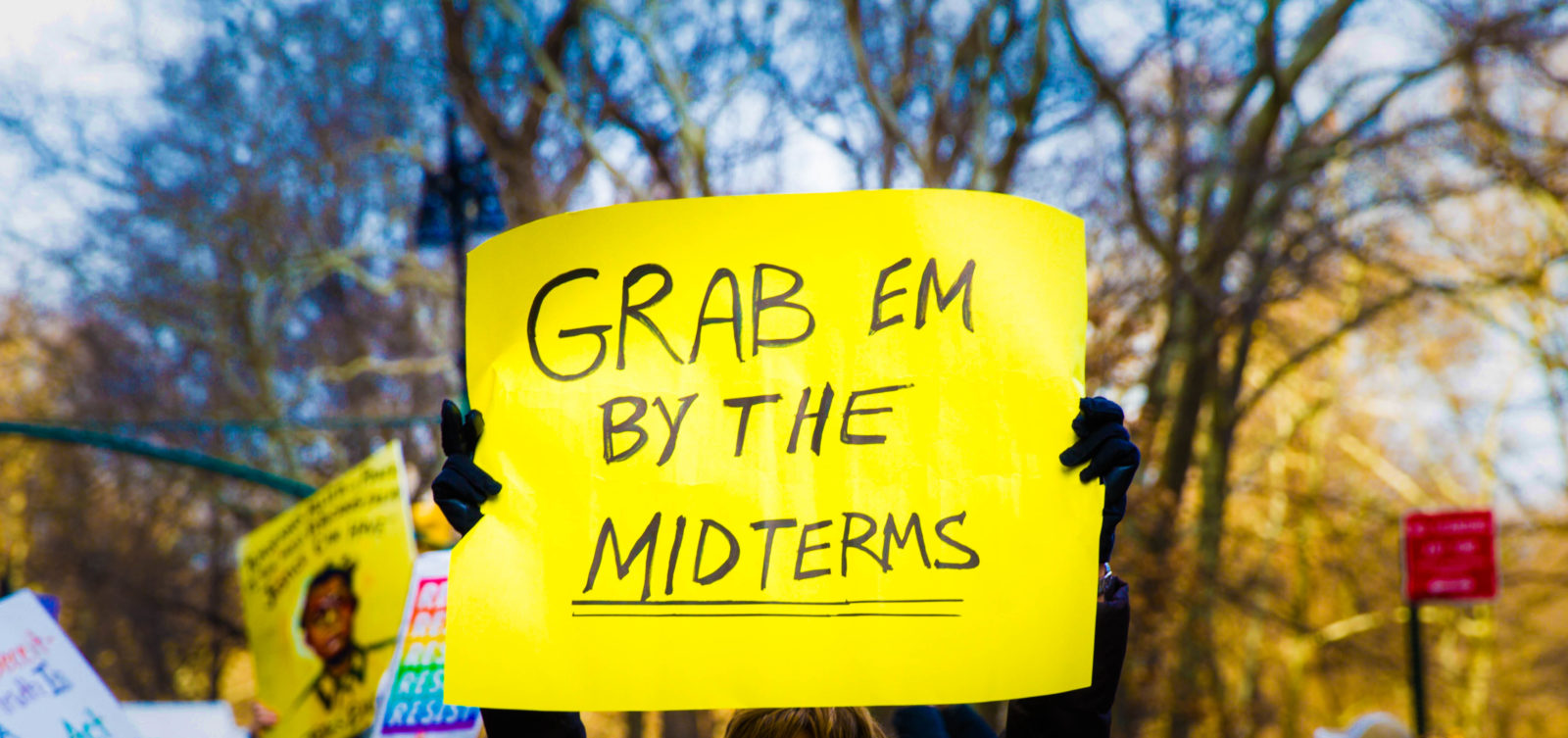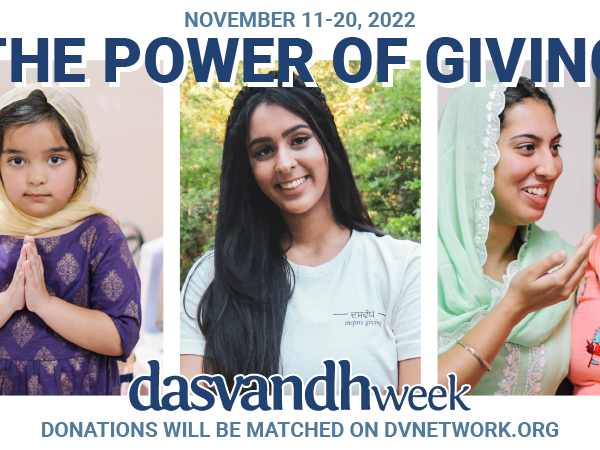By Harjot Kaur
Election season is near, and it is time for Sikh leaders to go beyond merely civic participants, to civic leaders.
Why I’m Taking Action
I’m probably not the first to be deeply troubled by the state of our government leadership today, and I have been struggling with how to feel and cope with the onslaught. So many of these national-level discussions revolve around core aspects of my personal identity. As a lawyer, I am alarmed by the possibility that entire legal concepts will be changed by an increasingly partisan and political Supreme Court bench. As a woman, I’ve been distraught by the way government leaders (and potentially future leaders) routinely interrupt, harass, mock, and treat women with disdain on national media without remorse. As a first-generation, tax-paying American citizen, I wonder how my fellow Americans look at my and my family’s right to be here, rather than to get to know about how patriotic we really are.
As a Sikh, I feel no such threat.
While religious persecution on a government level is certainly a growing possibility (and on an interpersonal level, an increasing occurrence), I am strengthened by our history of perseverance that has lasted centuries and am confident it will continue to infinity. Sikh history is my foundation, my rock, my moral compass. As always, I reflect on Sikh history and Gurmat for strength and direction.
That reflection pointed me to action. I don’t mean passionate, carefully-wordsmithed messages to publish on social media platforms, nor do I mean having discussions with like-minded friends and family on my opinions. I already do those things, but, given that I’ve placed myself smack-dab in the middle of my socio-economic bubble, those actions will likely accomplish nothing. When the Guru noticed that Malik Bhago gained his fortunes dishonestly, Guru Sahib did not go around telling everyone about it who would listen, nor did he advocate for all to stop attending Malik Bhago’s gatherings. When the Guru saw that Amritsar was taken over by Mahants who refused to recognize the true Guruship, Guru Tegh Bahadur did not rely on openly slandering the Mahants with his followers to remain with the Guru. In both of these cases, the Gurus took action. Guru Nanak Sahib found a more honest person to eat dinner with instead of Malik Bhago, Bhai Lalo. Guru Tegh Bahadur created an entirely new city and named it Anandpur Sahib. Instead of lashing out and reacting, the Gurus took actions that reflected their values and created their ideal situation.
Applying Our History
For Sikh Americans, the most important time for helping create an ideal situation has arrived – the midterm elections on November 6 this year.
Generally, voting participation is abysmally low. During the 2016 Presidential election, 61.4% of voters showed up to the polls. The 2014 midterm elections were much lower at 36.4%. Midterm elections, simply for not being as flashy and discussed as Presidential elections, are typically less attended. Minorities vote even less frequently, with only 44% voting in 2016 and 31.5% voting in 2014. These low numbers are usually due to voter suppression, which comprise of procedural rules that state government elected officials create in order to game the system so that their party is most likely to win. Voter suppression is a real problem, but something to be battled at a different time. At this time, the most important battle to confront is the upcoming midterm election itself.
Why is the midterm election so important?
Many Congressional seats are up for re-election on years that do not coincide with Presidential elections. For many of these seats, the opportunity to vote against an elected official will not happen again for multiple years. And the people who fill these seats are the first line of defense against Presidential ambitions that may go against core Sikh principles. Further, any impeachment decisions would be made by Congressional officials. With discussion of impeachment gaining traction, and so many Congressional seats up for reelection during these midterms, the outcome of these elections could decide on that monumental issue.
Many readers will already understand the magnitude of these upcoming elections. They are in November, and many may already know who they may be voting for. But as Sikhs, not only does the Guru show us how to act, but how to lead. As a Sikh, I propose not only voting this year, but also leading the way to registering your fellow Sikh sangat to vote.
Among many things, voting is one way we as Sikhs can help secure turban rights, religious freedom, reducing hate crimes (or making sure measures are in place to help survivors), getting census recognition, lobbying for Punjabi-language inclusion, influencing diversity educational policy, and getting people in office who are friendly towards the Sikh way of life.
Mobilizing your Sangat
Run a voter registration drive at your Gurdwara
Each state has different rules on how to properly conduct a voter registration drive, and every county will have individual nuances in how they implement those state election rules. For example, if you’re in Texas every voter must have a state-issued I.D. to vote, and to run a voter registration drive, you must first undergo a training to become a Volunteer Deputy Registrar. These VDR’s will be able to collect all voter registration forms and have to personally hand them in to the comptroller’s office. If you want to learn about what your specific state’s rules are, there’s a really great summary for each state’s voter registration drive rules here.
Need more ideas? Check out Sikh Coalition’s resources.
Gurdwara Newsletters
If your Gurdwara sends out regular newsletters, ask your Gurdwara Committee to remind the Sangat about Early Voting dates and other dates. This can get legally tricky, however, especially if the Gurdwara is a registered 501(c)(3). A religious organization like a Gurdwara cannot promote any political candidate or party in any official capacity. So, all official Gurdwara newsletters must be non-partisan, so make sure it carefully just reminds people about dates, times, and precincts available on election days.
Think about including an image of a sample ballot along with Punjabi interpretations so the Sangat can become familiar with the layout.
Know Dates
Have Early Voting and Election dates readily available and tell people to write down those dates. If members of Sangat will be out of town, be able to quickly give them information on rules for submitting absentee ballots in your state.
Combat Excuses
Try to have solutions for every person’s excuse. This is a big one – given all of the many carefully-curated barriers to voting (voter suppression), they will have legitimate concerns about voting or registering to vote. A big fear is that if you can avoid doing jury duty if you also avoid registering to vote. This is a widely-held misconception, since it is only the rule if you live in Ohio or Wyoming. In all other states, jury duty lists come from other lists such as driver’s licenses, tax forms, and many others.
If your sangat is primarily Punjabi speakers, ask SALDEF’s for Punjabi language resources on voting.
Get People to the Polls
Put in the work to get people to the polls! If you can give folks a ride to the polls, consider it seva and donate that time to a great cause. If you can’t, let them know that Lyft is offering discounted rides to the polls this year, and free rides to the polls in particularly disadvantaged communities. Don’t take no for an answer!
Celebrate
Make voting a celebratory event! Take pictures of folks holding their voter registration cards. When they vote, take pictures of Sikhs wearing those iconic “I Voted” stickers. Post those pictures up on your Gurdwara bulletin boards, circulate in newsletters and social media, and maybe even get them in the Uncle/Auntie WhatsApp circuit! Make it something that others will feel FOMO about.
Make it Easy
Finally, make it easy for them to determine who to vote for. The Sikh sangat is a great group of people with whom to advocate with and have meaningful discussions about present-day government policies. Many hard-working immigrant families, especially those for whom English is a second language, will have trouble parsing out policies that do not directly relate to them from watching the news alone. Those who are even marginally politically aware will be able to discuss the issues with them in a way that could politically activate them. Bringing these two groups together can help Punjabi speakers feel more comfortable voting. If you want to know what is exactly on the ballot in your area, BallotReady.com provides a non-partisan source for information on what needs to be decided this November.
Resources
National Voter Registration Form – http://www.eac.gov/voter_resou
Instructions for the National Voter Registration Form in Punjabi (unofficial) – download here
Absentee Ballot Information – http://www.longdistancevoter.o
State Specific Information – http://www.rockthevote.com/ele
Voter Protection Hotline, Legal Aid, and Resources – http://www.866ourvote.org/
State Voter ID Laws – http://www.ncsl.org/legislatur
APALC – www.apalc.org
APIAVote – www.apiavote.org
18 Million Rising – www.18mr.org
Important Dates
Just so that nobody has a reason to be uninformed, here’s a list of each U.S. state’s election webpages that provide specific information on what exactly their voter registration and voting rules are. We can create change, folks! There is only one Sunday left before many states’ voter registration deadlines occur, but I am confident this can become a bigger movement. It takes hard work, but there’s nothing worth doing that doesn’t require it. Find your state’s election information here:
| Alabama: October 22 |
| Alaska: October 7 |
| Arizona: October 9 |
| Arkansas: October 9 |
| California: October 22 |
| Colorado: October 29 |
| Connecticut: October 30 |
| Delaware: October 13 |
| District of Columbia: October 16 |
| Florida: October 9 |
| Georgia: October 9 |
| Hawaii: October 9 |
| Idaho: October 12 |
| Illinois: October 21 (online); October 9 (in person) |
| Indiana: October 9 |
| Iowa: October 27 |
| Kansas: October 16 |
| Kentucky: October 9 |
| Louisiana: October 16 |
| Maine: October 16 |
| Maryland: October 16 |
| Massachusetts: October 17 |
| Michigan: October 9 |
| Minnesota: October 16 |
| Mississippi: October 9 |
| Missouri: October 10 |
| Montana: October 9 |
| Nebraska: October 19 (online/by mail); October 26 (in person). |
| Nevada: October 9 (by mail); October 18 (online); October 16 (in person) |
| New Hampshire: October 24 (by mail); November 6 (in person) |
| New Jersey: October 16 |
| New Mexico: October 9 |
| New York: October 12 |
| North Carolina: October 12 (by mail); November 3 (in person) |
| North Dakota: Does not require voter registration prior to Election day. |
| Ohio: October 9 |
| Oklahoma: October 12 |
| Oregon: October 16 |
| Pennsylvania: October 9 |
| Rhode Island: October 7 |
| South Carolina: October 7 (online); October 9 (by mail); October 5 (in person) |
| South Dakota: October 22 |
| Tennessee: October 9 |
| Texas: October 9 |
| Utah: Can register and vote on Election Day |
| Vermont: Can register and vote on Election Day |
| Virginia: October 15 |
| Washington: October 8 (online; by mail; if registering with a new name or address); October 29 (in person) |
| West Virginia: October 16 |
| Wisconsin: Can register and vote on Election Day |
| Wyoming: Can register and vote on Election Day |





No Comments